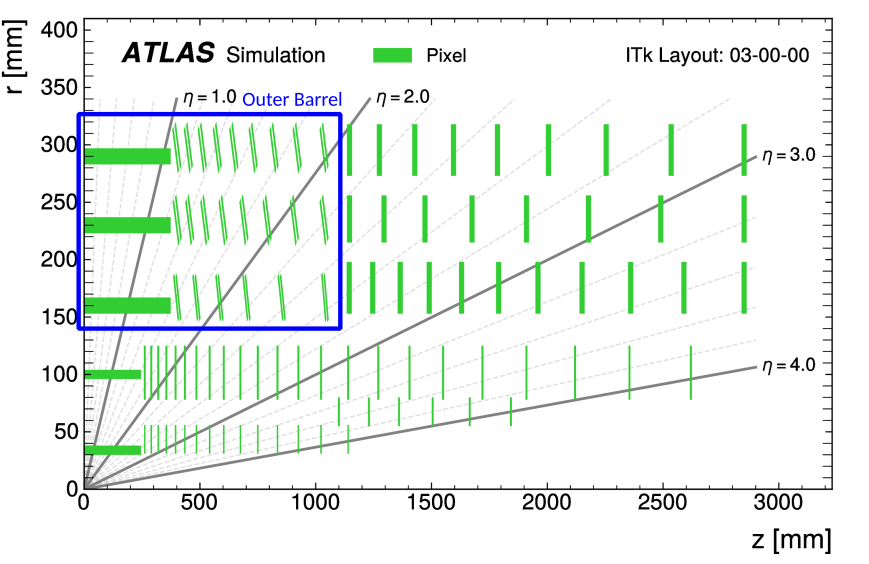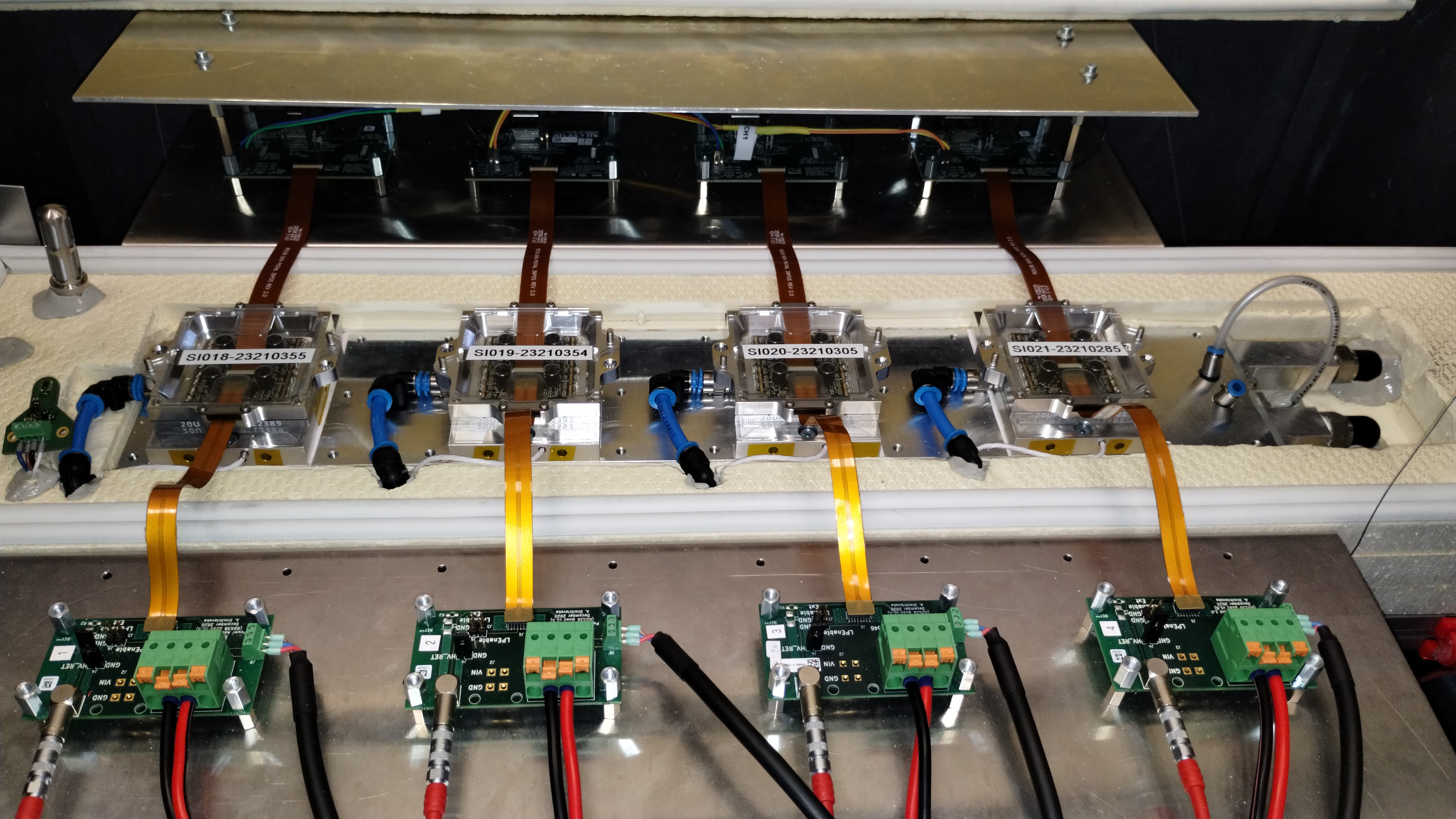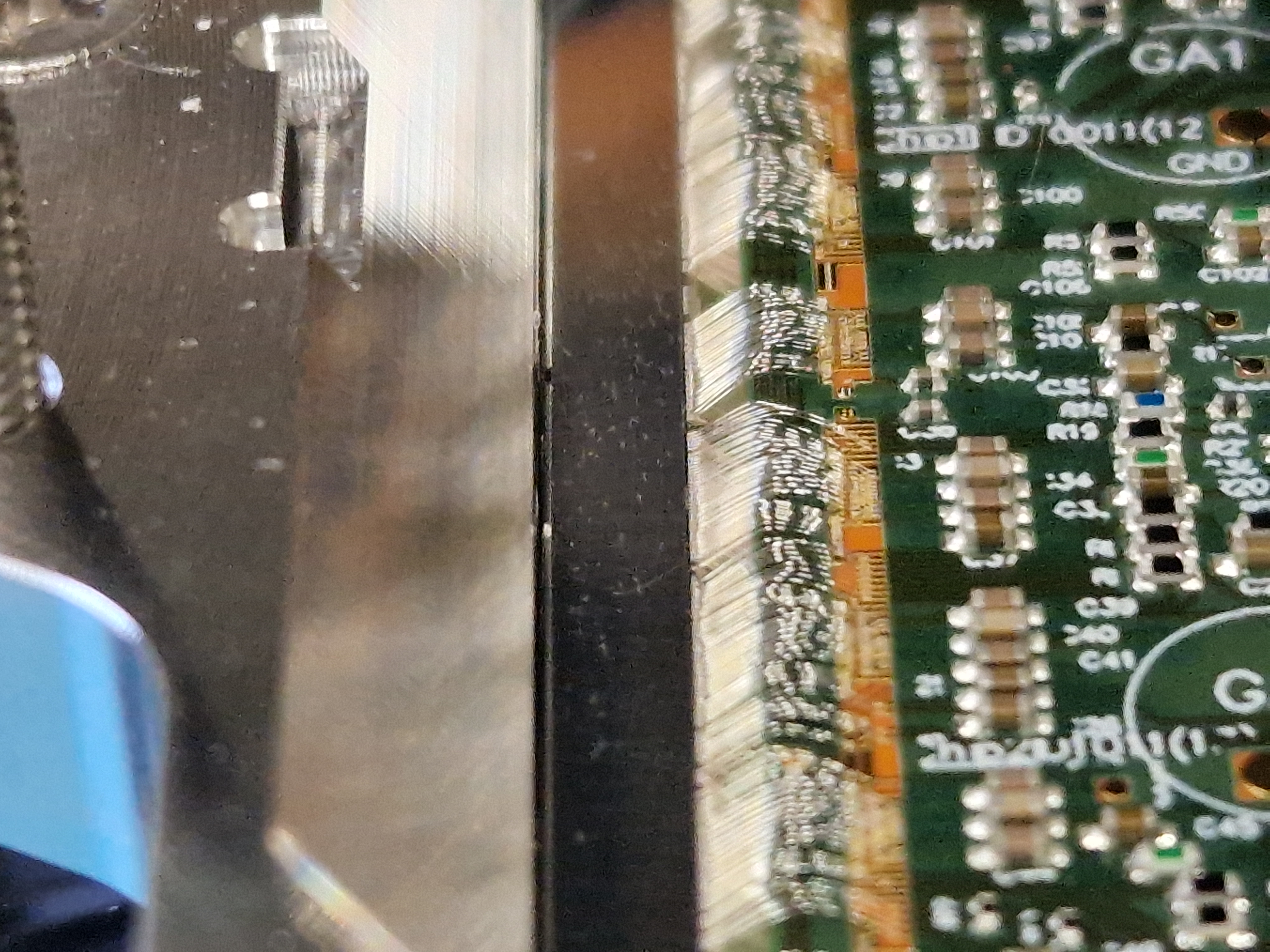ATLAS ITk
Produktion von Pixel-Modulen und Qualitätskontrolle der flexiblen PCBs
Wir bauen und testen zurzeit etwa 200 Produktions-Module, welche mit der Front-End-Chip-Version RD53C (auch ITkPixV2 genannt) bestückt sind. Der ITkPixV2-Chip basiert auf den Entwicklungen der RD53 Kollaboration. Die Module, die derzeit in Siegen produziert werden, sind für die Outer-Barrel-Region des ATLAS ITk bestimmt (Abb. 1).

Für die Modul-Produktionsphase hat unsere Gruppe Testsysteme entwickelt, um Module elektrisch zu testen (Abb. 2) sowie um den thermischen Stress auf die Module zu simulieren. Ein entsprechender Reinraum wurde am Institut eingerichtet, in welchem der Bau von Modulen in einer staubfreien Umgebung gewährleistet ist. Mit Modul-Attrappen ("Dummy-Modulen"), Prototyp- und Vorproduktionsmodulen wurde der Bau von Pixel-Modulen erfolgreich geübt. Bei der Modul-Produktion ist es besonders wichtig, eine höchstmögliche Präzision bei den einzelnen Bauschritten (Abb. 3) zu erreichen, sowie sicherzustellen, dass die gebauten Module nach jedem Bauschritt den strengen Qualitätsanforderungen an die Moduldimensionen sowie den elektrischen und thermischen Eigenschaften weiterhin entsprechen.


Neben dem Bau und Testen von Modulen wird in Siegen die Qualitätskontrolle von allen 2000 flexiblen PCBs (Flexes) des deutschen Outer-Barrel-Clusters zur Produktion von Pixel-Modulen durchgeführt. Siegen, Bonn, und Göttingen sind Mitglieder dieses Produktionsclusters. Mittels dieser Qualitätskontrolle wird überprüft, ob die in der Industrie hergestellten Flexe die strengen Anforderungen an die elektrichen Eigenschaften und an die Abmessungen erfüllen, sodass sie zum Bau guter Produktions-Module verwendet werden können.





